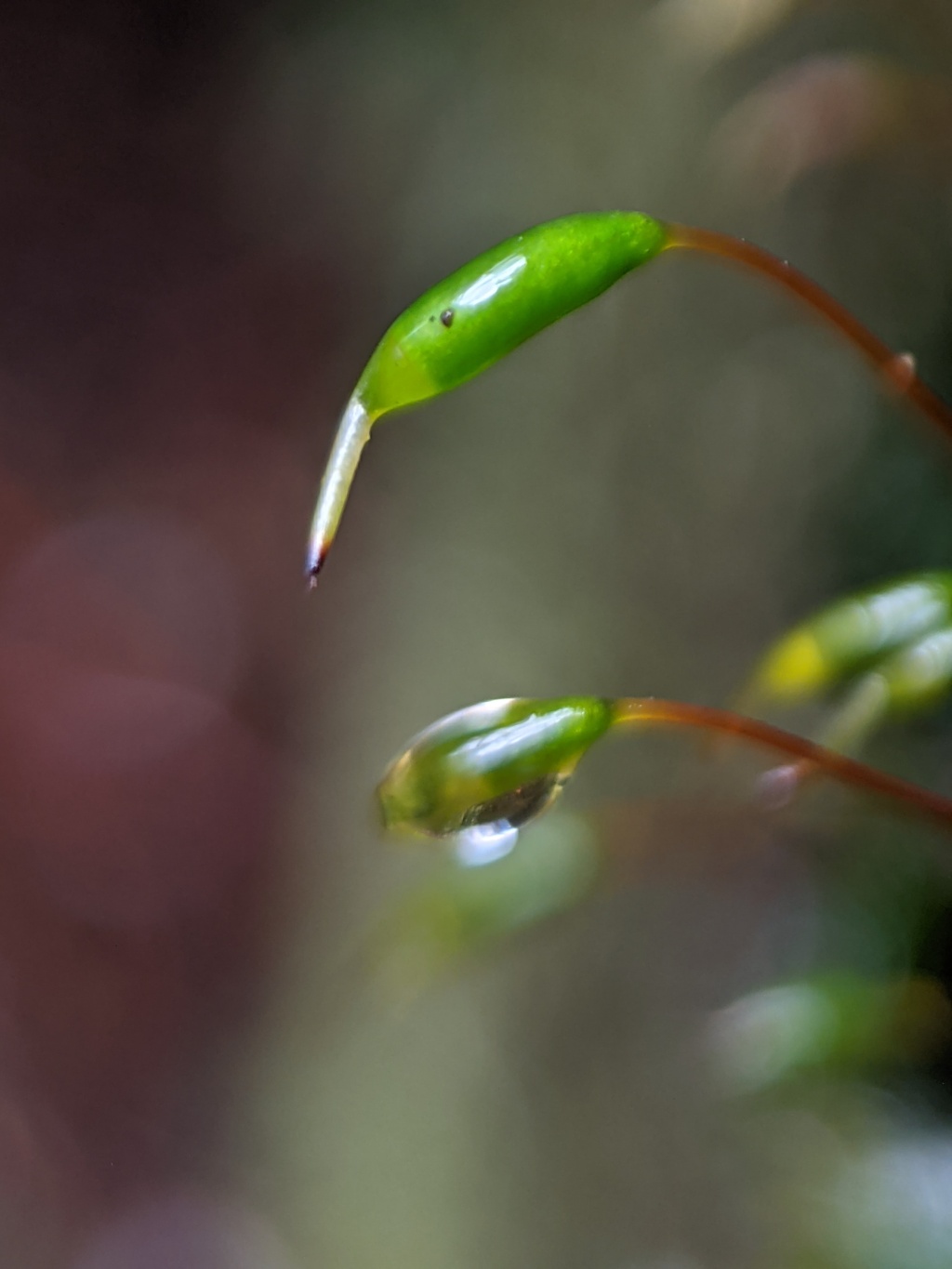Plagiothecium
Autoicous or sometimes dioicous (not in Victoria). Asexual reproduction by gemmae on branched stalks in leaf axils (not in Victoria) or in clusters without stalks on abaxial leaf surface (not in Victoria) or at leaf apex (not in Victoria). Glossy mats or tufts (not in Victoria) on soil, rocks, logs or trees. Stem creeping or erect (not in Victoria), simple or sparingly and irregularly branched, with rhizoids in leaf axils; central strand present, often indistinct. Leaves ovate, ovate-oblong or ovate-lanceolate, symmetric or asymmetric, monomorphic or lateral leaves differing from dorsal leaves in being more asymmetric, mostly complanate or arranged around branches and facing all directions, erect to wide-spreading when moist, scarcely altered when dry, sometimes secund (not in Victoria), decurrent; apex acute or acuminate, rarely obtuse (not in Victoria), sometimes bearing rhizoids (not in Victoria), sometimes piliferous (not in Victoria); costa absent (not in Victoria), short and double or with one branch extending much further to 1/3–1/2 of leaf; margin entire or serrulate at apex, plane or recurved or revolute; laminal cells linear to linear-rhomboid, smooth; alar cells differentiated, circular, elliptic, quadrate or rectangular, often inflated, forming decurrent auriculate patches. Capsule erect to pendent, straight or curved, ovoid (not in Victoria), ellipsoid, obloid or cylindric, smooth or sulcate. Calyptra cucullate, smooth, glabrous. Operculum conic or rostrate (not in Victoria). Endostome with a low (not in Victoria) to high basal membrane; cilia present or rarely rudimentary (not in Victoria) or absent (not in Victoria).
On all continents except Antarctica, with around 90 species; one species in Victoria.
 Spinning
Spinning

